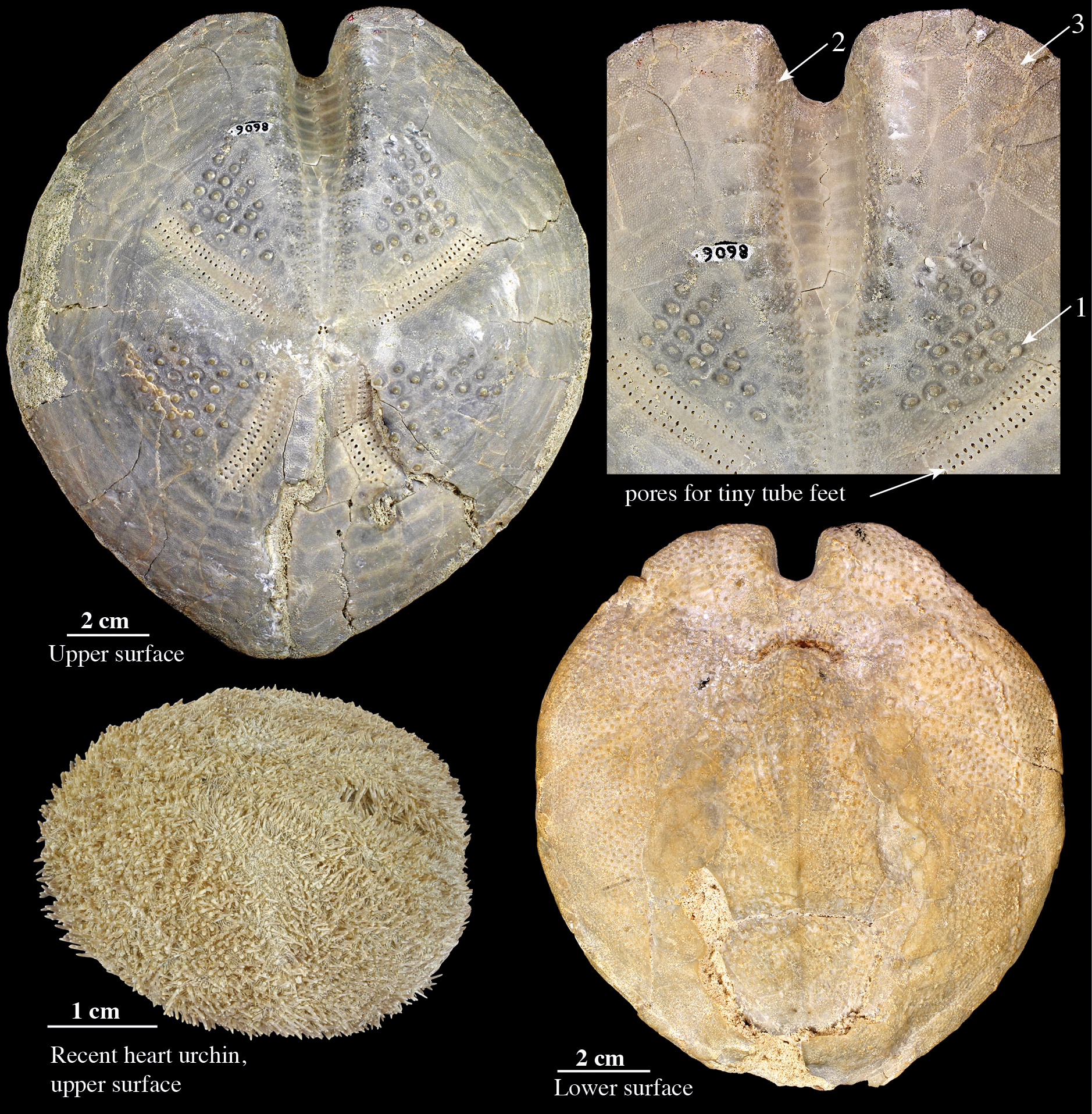34 Fossil sea hearts made of many plates
Echinodermata, Spatangoidea: Taimanawa greyi
The genus Taimanawa is a distant relative of the heart urchin Pericosmus and has two species represented in the University of Otago Geology Museum collections. The name Taimanawa is derived from Te Reo Māori where tai refers to the sea and manawa to heart. The well-preserved holotype of Taimanawa pulchella has the Geology Museum specimen ID number OU 8590. This specimen was collected from the Caversham Sandstone near Karitane, a seaside settlement north of Ōtepoti Dunedin. There are also several handsome specimens of the closely related Taimanawa greyi from the UNESCO Waitaki Whitestone Global Geopark.

The upper and lower surfaces of two specimens of the spatangoid echinoderm Taimanawa greyi. The upper specimen (OU 8598) was collected from Earthquakes, North Otago and specimen OU 8606 (lower right) comes from Gordon Valley. Note that the upper surface of fossil heart urchins is often preserved in better condition. Arrows 1, 2 and 3 point to three sizes of tubercle, indicating three sizes of spine on the test. The upper surface of a Recent heart urchin with thousands of tiny spines is also shown. Image credit: JH Robinson. |
In the figure above, the upper surface of Taimanawa greyi is seen to be made up of many small plates whose outlines are faintly visible. There are three different sizes of tubercle, indicating different sizes of spine that were attached to the tubercles, and four double rows of pores for tube feet. The spines and tube feet would have functioned to maintain the water space within the sediment, digging the animal through the sediment and maintaining a channel to the surface for gas exchange (see Figure for Pericosmus). The second specimen shows the lower side with the mouth.
A small modern heart urchin is also shown, still with all its spines attached and displaying the faint outlines of the petals.
Spatangoids closely related to these fossils from New Zealand occur in rocks of similar Oligocene to Miocene age in Australia suggesting long-distance dispersal across the Tasman Sea at times in the distant past when conditions were right for larvae to disperse far and wide.
—Written by Jeffrey H Robinson and Daphne E Lee
| Specimen number: OU 8598 and OU 8606 | Age: 25.4. to 24.4 million years ago (late Oligocene, boundary between the Duntroonian and Waitakian stages) |
| Locality: Earthquakes, North Otago (OU 8598), Gordon Valley, South Canterbury (OU 8606) | Rock Formation: Otekaike Limestone (OU 8598), Craigmore Limestone (OU 8606) |
| Collected by: JD Campbell (8598), SS Morete (OU 8606) | |
| Citation: Henderson 1975. Cenozoic Spatangoid Echinoids from New Zealand. New Zealand Geological Survey Paleontological Bulletin 46 | |
The taxonomic rank that groups together closely related species. The genus forms the first part of the binomial species name.
The individual specimen from which a species is named.
https://www.youtube.com/watch?v=802jWSD4dnw
aquaticpro/YouTube.com
Evidence of life from a past geological age. Remains like bones, shells or wood, or an impression like a footprint, or some other evidence of life, from something that was alive more than 11,700 years ago.

